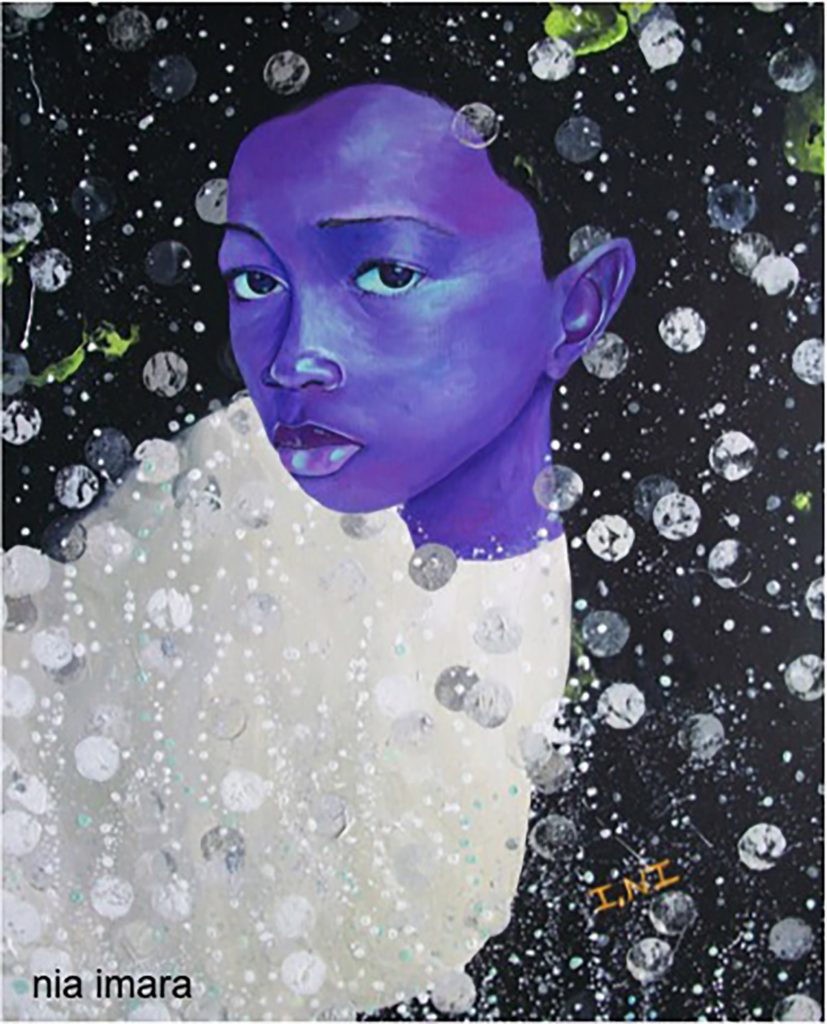

It’s the weekend POU! I hope you are enjoying the series on African-American painters. Today we are honoring Nia Imara.
Nia Imara is an American astrophysicist and artist. Imara was involved in work that deals with galactic mass, star formation and detecting exoplanets. Imara was the first African-American woman to earn a Ph.D. in astrophysics at the University of California, Berkeley.
Imara was born in East Oakland, Oakland, California and grew up in the San Francisco Bay Area. She attended Kenyon College for her bachelor’s degree, majoring in mathematics and physics. She moved to the University of California, Berkeley for her postgraduate studies, and in 2010 she became the first African-American woman to earn a Ph.D. in astrophysics at the University of California, Berkeley. Her dissertation was on The Formation and Evolution of Giant Molecular Clouds and was supervised by Leo Blitz.
Imara was the inaugural postdoctoral fellow on the Future Faculty Leaders program at Harvard University. In 2017 she was appointed a John Harvard Distinguished Science Fellow at the Harvard–Smithsonian Center for Astrophysics. She has developed a model that connects galaxy mass, star formation rates and dust temperatures.

Together with Roseanne Di Stefano, Imara has proposed a method for detecting exoplanets in X-ray binary star systems.
Imara is also an artist whose primary medium is oil on canvas. In 2014, she opened her own gallery, First Love.
In 2015 she held a series of exhibitions in Oakland called Generation of Oakland: The People’s Portrait, looking at the impact of gentrification on Oakland resident’s families. From 2016 to 2019, these interviews with and photographs of the people affected by gentrification were online at GenerationOfOakland.com.

She is an advocate for equity in STEM, co-founding the Equity and Inclusion Journal Club at Harvard University. She has visited South Africa and to teach and advocate in programs designed to increase diversity in astronomy and other STEM areas.
